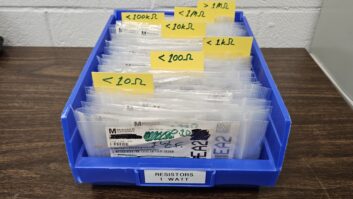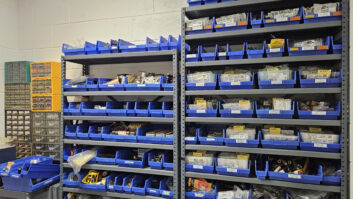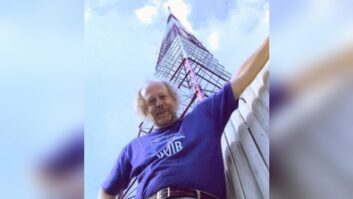Long-time radio engineering vet John Holt will be helming an interesting session at the upcoming AES show in New York, “Production of ‘A Prairie Home Companion,’” Oct. 30, 1:45–3 p.m. He talked to Radio World about his career and what he has planned for the AES show audience.

Radio World: Who are you and give us a quick tour of your radio engineering career.
John Holt: I’ve recently retired after 21 years at WAMU and 45 years in broadcasting. I built New Hampshire Public Radio’s first station 35 years ago. In the mid-’80s I was chief engineer of MPR’s Twin Cities operation. I consider my first job in broadcasting as the two years I spent in the radio/TV control room at Michigan Bell in Detroit which was the perfect place to learn about equalized phone and video lines and network distribution.
RW: You’re helming a high-profile session at the upcoming AES show, “Production of ‘A Prairie Home Companion.’” That sounds awfully tantalizing. What are you planning for the attendees?
Holt: A bit of history and a lot about how the show is done and why it’s done the way it is along with changes in the technology over the last 20 years and a little look to the future.
RW: You’ve roped in some “Prairie Home Companion” vets to help. Is it hard to get qualified help for what would seem to be a very specialized job?
Holt: I’ve asked a couple of past show techs for some history. I have not worked with the presenters joining me at AES but Sam Hudson and Tom Scheuzger have been involved with the show the longest of any engineers, over 21 years.
As far as qualifications, they may not be what you think. It’s really the same as the national talk shows at WAMU. A love of sound and broadcasting, a knowledge of music which also gives one a sense of timing and most important, to never be encumbered by convention which is another way of saying take chances and think outside the box.
RW: You’ve been involved in the distribution of “A Prairie Home Companion” for a few years. How did things technically and practically change over the years?
Holt: I worked with the transportable uplink when Minnesota Public Radio purchased it, the NPR satellite system and the use of the tie lines between the World Theatre and MPR. Sam will be addressing the change in production aspects. What really made the show possible nationwide was the NPR satellite system which was SCPC allowing for multiple uplinks and transportable from anywhere in North America with full fidelity and I’ll talk some about that. Tom will address the changes in transmission and backhaul as ISDN and now the Internet supplant the transportable uplink.
RW: Can/should radio do more of these type of productions or are they beyond the capabilities (and budget) of any but the most well-heeled groups?
Holt: This is a question that is difficult to answer. As a broadcaster who happens to be an engineer and dedicated to the traditions of the medium of radio I would like to see more of his kind of production and there is a certain intensity when a show has an audience and when the audience knows the show is live.
But the cost is not as important as the host. The majority of variety show hosts, whether in the old days (Benny, Burns, etc.) or with public radio now, are or were raconteurs. And as we are seeing with the age of popular public radio shows and the retirement of hosts with few replacements (“Wait Wait … Don’t Tell Me!” being an exception although it is now 16 years old), new talent will have to come along or there will be a change in programming. The talent finds the medium and a management that is willing to take a chance and fund something new and we are back to not being encumbered by convention.









